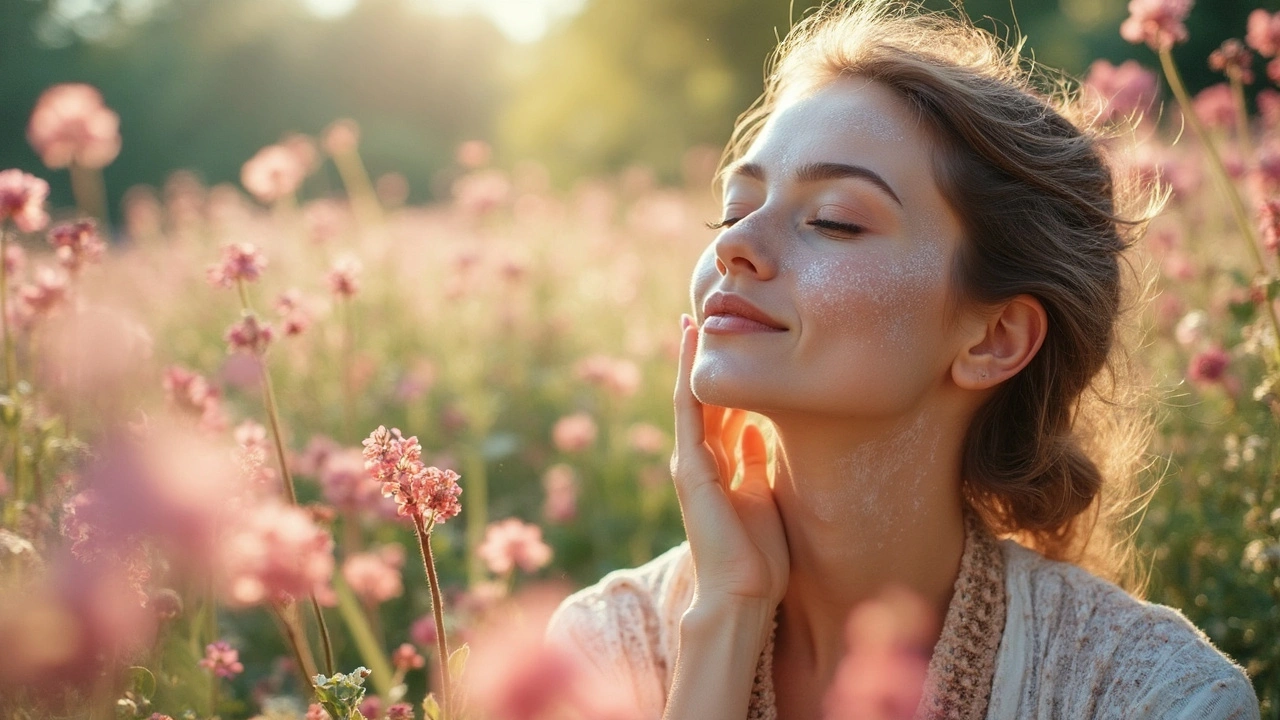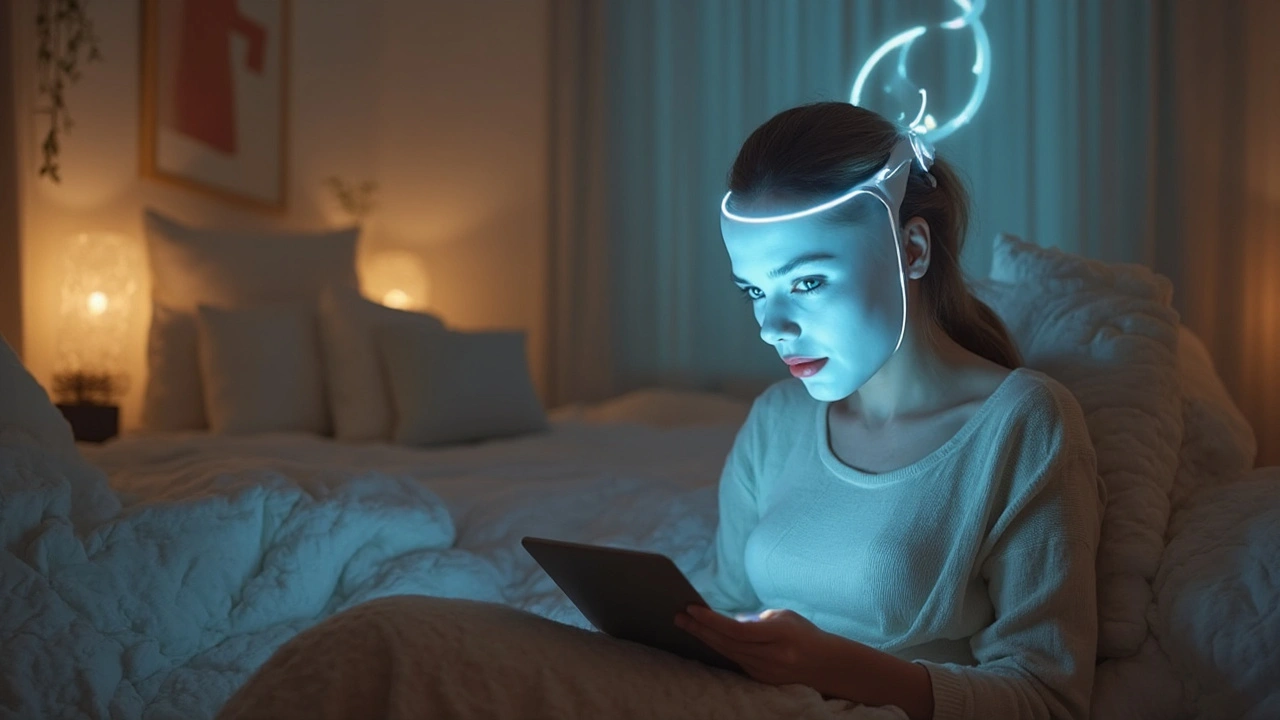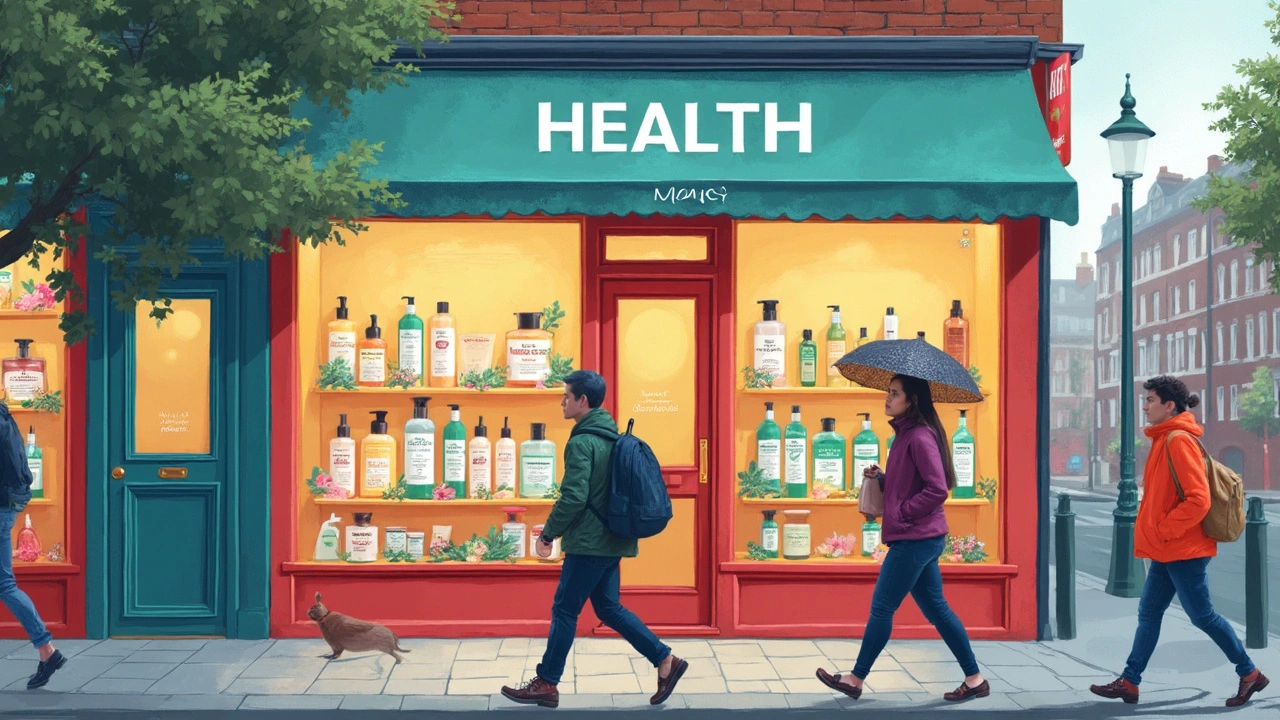6 Awesome Alternatives to Isotroin That Work
 Mar, 24 2025
Mar, 24 2025
Looking for something other than Isotroin to keep those pesky breakouts at bay? You're in luck because there are several solid options out there that tackle acne effectively without the hassle of heavy medication. Some of these alternatives might even surprise you with how well they work!
One of the hot topics these days is light therapy. It's like letting science do its thing with cool devices that shine specific light wavelengths on your skin. This not only helps in reducing bacteria that cause acne but also calms the inflammation down.
On the other hand, if you’re more into what’s going on inside your body, focusing on dietary changes could make a massive difference in your skin health. It’s amazing what cutting out certain foods or adding some skin-loving nutrients can do.
We'll break down each option above to see what fits your lifestyle best. Whether you’re all about natural remedies or want to try advanced dermatological procedures, there’s something for everyone.
- Light Therapy (Blue/Red Light, Photodynamic Therapy)
- Dietary Changes
- Topical Retinoids
- Herbal Remedies
- Chemical Peels
- Laser Treatments
- Conclusion and Comparison
Light Therapy (Blue/Red Light, Photodynamic Therapy)
Ever heard about zapping those zits with light? That’s what light therapy is all about, and it’s becoming a popular way to tackle acne without harsh meds. It involves using specific wavelengths of light—think blue and red lights. Blue light deals with the bacteria causing the acne, while red light soothes inflammation.
The cool part about this therapy is its non-invasive nature. You basically just chill while the light does its magic. There are even some at-home devices these days, although it's still a good idea to consult with a professional.
On the more advanced side, there’s photodynamic therapy (PDT). In this treatment, light is combined with a photosensitizing agent. It might sound a bit extra, but this combo can be super effective for severe cases of acne.
Pros
- No systemic side effects, making it a safer alternative to other medications.
- Suitable for folks with sensitive skin who can’t tolerate harsh treatments.
- Often improves overall skin clarity, giving that sought-after glow.
Cons
- Treatment usually requires multiple sessions, so patience is key.
- It can be on the pricier side, especially with all those sessions adding up.
- Limited accessibility since not everyone has a clinic nearby offering these cool technologies.
Overall, light therapy is a promising alternative if you’re not into topical medications or pills. It’s like giving your skin a bit of high-tech TLC, and who doesn’t want that?
Dietary Changes
Ever wondered if what you eat could be messing with your skin? Believe it or not, your diet plays a massive role in how clear or blemished your skin can be. Making some dietary changes can sometimes be your secret weapon against acne.
For starters, cutting back on sugary foods and refined carbs may reduce the frequency of your breakouts. Foods like white bread, sugary snacks, and sodas can spike your blood sugar levels, triggering more oil production in your skin.
Instead, focus on incorporating more low-glycemic foods. Think whole grains, beans, and veggies. These foods help keep your blood sugar stable, which can lead to clearer skin.
And then there's dairy. Some people find that reducing their dairy intake helps big time with their acne. Switching to non-dairy alternatives might be worth a shot if you suspect milk products are your skin's foe.
Don't forget about healthy fats! Omega-3 fatty acids, found in foods like fish and walnuts, are famous for their anti-inflammatory benefits. So, they might help soothe angry acne flare-ups.
Here's a quick view of what could work:
- Try including more leafy greens, which are packed with skin-friendly vitamins and minerals.
- Snack on nuts, but not too much, since they're dense in calories.
- Avoid sugary drinks and stick with water (boring, but true) to keep your skin hydrated.
Ultimately, if you suspect any foods are messing with your skin, try an elimination diet. Just remove the suspect foods for a few weeks and see if things improve. It’s not magic, but sometimes what you leave off your plate makes all the difference.
Changing your diet isn't an overnight fix, but it’s definitely worth trying before other treatments. Plus, it's a great excuse to up your game with healthier habits overall!
Topical Retinoids
When it comes to battling acne, topical retinoids are like the superheroes of skincare. Derived from Vitamin A, these products swoop in to unclog pores, reduce inflammation, and even out your skin tone. They’re hailed for not only combating acne but also addressing issues like fine lines and skin texture.
So, how do they work? Well, retinoids basically speed up cell turnover. This means they help get rid of the old skin cells faster, making room for fresh, healthy skin beneath. They also prevent dead skin cells from clogging your pores—a pretty common culprit for breakouts.
Most retinoids can be found in creams, gels, or lotions, and they vary in strength. You can get some over-the-counter, but for the heavy-duty stuff, you might need a prescription from a dermatologist. Some of the popular names you might hear are Adapalene, Tretinoin, and Tazarotene.
Pros:
- Highly effective in reducing acne and improving skin texture
- Boosts collagen production, which can reduce fine lines over time
- Widely accessible with both OTC and prescription options
Cons:
- Can cause dryness or irritation initially; a gentle introduction to your routine is recommended
- May increase sensitivity to the sun, so sunscreen is a must
- Results can take several weeks to become visible
If you're new to topical retinoids, it might be a good idea to start with a lower concentration and gradually move up as your skin adjusts. And don't forget the sunscreen—these products can make your skin more sensitive to the sun's rays!

Herbal Remedies
When it comes to dealing with acne naturally, herbal remedies are gaining ground as they have been used for centuries. They’re gentle on the skin and can be easily incorporated into your daily routine. But what exactly are we talking about here? Let’s explore some of the most popular and effective herbs for tackling acne.
Tea Tree Oil is a fan favorite. It’s known for its strong antimicrobial properties, which help in fighting acne-causing bacteria. Just a small dab can reduce swelling and redness pretty quickly. But be careful, because using too much, especially on sensitive skin, might cause irritation.
Next up, we have Aloe Vera. This plant is a wonder for soothing inflammation, and it also has some antibacterial properties. Applying fresh aloe gel can feel really refreshing and can speed up healing processes for those stubborn acne spots.
Another powerful option is Green Tea Extract. While many swear by drinking green tea, using an extract directly on the skin can reduce sebum production and promote clearer skin. Plus, it’s packed with antioxidants that help combat acne.
For those looking into hormonal balance, Evening Primrose Oil is worth considering. It’s often recommended for its ability to regulate hormonal activity, which can be beneficial when your skin issues are related to hormonal changes.
Though these herbal options are quite accessible and often have fewer side effects, it's essential to test them out to see what your skin reacts well to. And like with anything, consistency is key to seeing the results you want.
- Easy to find and often inexpensive
- Typically fewer side effects compared to medications
- Can be combined with other treatments
- Often benefits overall skin health
Chemical Peels
So, you’ve heard about chemical peels for acne? They're like giving your face a fresh start by removing dead skin cells and encouraging new ones to pop up and say hello. People swear by them not just for clearing acne, but also for giving your skin a nice, healthy glow.
What’s the deal with chemical peels? Well, there are different types ranging from light, medium, to deep peels. They use acids like glycolic acid, salicylic acid, and trichloroacetic acid (TCA) to work their magic. Light peels are great for a little refresh, while deeper peels can handle more stubborn acne scars.
Here's how it usually works: a dermatologist applies the peel solution to your skin, which causes it to exfoliate and, eventually, peel off. This process reveals new, smoother skin underneath.
Pros:
- Targets acne effectively and reduces visible scars
- Improves overall skin texture and tone
- Can be tailored to different skin types and concerns
Cons:
- Can cause redness and sensitivity post-treatment
- Requires downtime if using stronger peels
- Might need several sessions for noticeable results
Oh, and here's a pro tip: always use sunscreen after a peel because your new skin can be a bit of a sun-bum, getting burned easily.
And don't worry if your wallet feels the pinch, because there are over-the-counter peels you can pick up to get similar benefits at home, even if they’re not as potent. Just make sure to do a patch test first to avoid any surprises.
Laser Treatments
Ever thought about zapping away your acne problems? That's basically what laser treatments do! They use concentrated light to target and reduce those stubborn acne scars and blemishes, making them a popular alternative to Isotroin. You’ve probably heard of some names like Fraxel and PicoSure, which are gaining fans for how effectively they can clear up skin.
A dermatologist can adjust the laser's intensity to suit your skin type, which means it's pretty custom-tailored. This helps in minimizing any side effects and getting the best results possible!
Dr. Helen Hobbs of the Dermatology Center says, "Laser treatments have revolutionized how we approach acne scars, offering precision and reduced downtime for patients."
While it sounds all hi-tech, there are a few things to keep in mind. The treatment itself can be costly, as it often requires multiple sessions to see significant improvement. That being said, many find it worth the investment, especially when other treatments haven't quite cut it.
Pros
- Targets hard-to-get-rid-of scars
- Customizable treatment intensity
- Minimal downtime compared to older techniques
Cons
- Higher cost
- Requires several sessions for effective results
- Some discomfort during and after procedure
Just remember, laser treatments might not be for everyone, especially if you have sensitive skin or certain medical conditions. It’s always a good idea to chat with a dermatologist to see if this could be your skin’s new best friend.
| Session Number | Average Cost | Expected Improvement |
|---|---|---|
| 1-2 | $200-$400 each | 15-30% reduction in scars |
| 3-5 | $600-$900 each | 50-70% improvement |

Conclusion and Comparison
We've explored quite a few options, right? From buzzing light therapy devices to tweaking what you eat, there's a solution for everyone looking to ditch Isotroin and still rock that clear skin. The point here is that we have choices. Isn't that reassuring?
So, let's put all these alternatives side by side. You'll see that everything has its pros and cons, depending on your lifestyle and skin type. Here's a quick glance:
| Alternative | Pros | Cons |
|---|---|---|
| Light Therapy | No systemic side effects, reduces acne severity | Multiple sessions needed, can be pricey |
| Dietary Changes | Improves overall health, affordable | Slow results, requires discipline |
| Topical Retinoids | Reduces acne and wrinkles | Initial irritation, not suitable for all skin types |
| Herbal Remedies | Natural, fewer side effects | Efficacy varies, slower results |
| Chemical Peels | Exfoliates, improves texture | May cause redness, requires recovery |
| Laser Treatments | Long-lasting, effective | Expensive, requires downtime |
So, whether you're drawn to the non-invasive benefits of light therapy or prefer the natural route with herbal remedies, the key is finding what suits your skin best. And remember, what's perfect for one person might not be the best for another. It's all about trial and error—and consulting with a dermatologist can help you figure things out quicker!

Tammy Cooper
April 5, 2025 AT 01:05Alyssa Hammond
April 5, 2025 AT 19:01Jill Amanno
April 7, 2025 AT 01:29Kate Calara
April 7, 2025 AT 15:20Chris Jagusch
April 8, 2025 AT 05:41Phillip Lee
April 8, 2025 AT 12:16Nancy N.
April 8, 2025 AT 14:57Katie Wilson
April 10, 2025 AT 14:55Shivani Tipnis
April 10, 2025 AT 19:40Cindy Fitrasari S.
April 12, 2025 AT 08:36Priyamvada Toshniwal
April 13, 2025 AT 16:57Denise Wood
April 15, 2025 AT 11:35Andrew Butler
April 16, 2025 AT 20:57Varun Gupta
April 17, 2025 AT 11:03Amy Reynal
April 19, 2025 AT 02:18